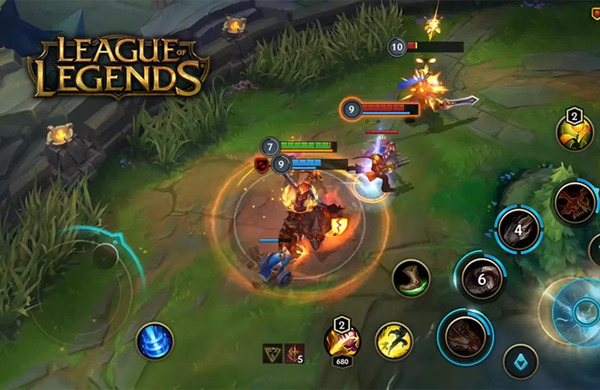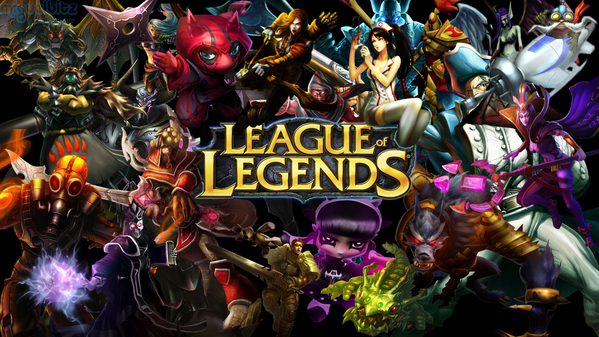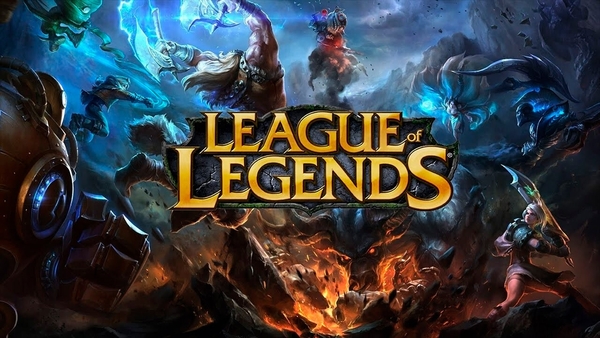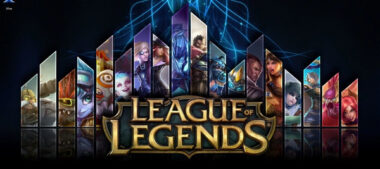Introduction
“League of Legends” (LoL) has been a dominant force in the gaming industry since its launch in 2009. Developed by Riot Games, it has attracted millions of players globally, thanks to its engaging gameplay, dynamic updates, and competitive scene. However, the journey of LoL has not been without its challenges, particularly concerning its matchmaking system. This article delves deeply into the evolution of matchmaking in “League of Legends,” focusing specifically on the issues and controversies surrounding its ranking system.

Early Matchmaking: A Simpler Era
The Beginnings of Ranked Play
When “League of Legends” first introduced its ranked play system, the focus was on providing a structured environment for competitive gaming. In its early stages, the ranking system was relatively simple, featuring a tier-based system with divisions ranging from Bronze to Diamond. The objective was clear: players advanced through ranks based on their performance in matches, with each tier representing a different skill level.
Initial Problems and Community Feedback
Despite its simplicity, the system was not without flaws. Early players often encountered problems with match quality, such as frequent mismatches between teams of varying skill levels. Community feedback highlighted issues like unbalanced teams and the frustration of facing players who were either significantly better or worse than their opponents. Riot Games took this feedback seriously and began exploring ways to refine the system.
The Introduction of the Elo Rating System
The Elo System Explained
To address the concerns of mismatched games, Riot Games introduced the Elo rating system, which was designed to more accurately reflect a player’s skill level. Named after Arpad Elo, the system is used to calculate the relative skill levels of players. It considers not only the outcome of matches but also the relative skill of opponents and teammates. This system aimed to create a more balanced competitive environment and improve the overall matchmaking experience.
Impact on Gameplay
The introduction of Elo ratings had a significant impact on gameplay. Players began to notice a more balanced matchmaking experience, with games that felt more competitive and fair. However, the Elo system was not without its issues. It struggled with certain aspects, such as handling players who were on losing streaks or had fluctuating skill levels. Additionally, the system had difficulty accommodating players who were new to the ranked environment.

The Advent of the MMR System
Transition to MMR
In response to the limitations of the Elo system, Riot Games transitioned to a more advanced matchmaking rating (MMR) system. Unlike Elo, which was based on a fixed number of tiers and divisions, MMR operates on a continuous scale, allowing for a more nuanced assessment of player skill. The MMR system aimed to provide a more accurate representation of a player’s abilities and improve matchmaking quality.
Advantages and Issues
The MMR system offered several advantages over Elo, including more precise matchmaking and better handling of player skill fluctuations. However, it also introduced new issues. For instance, players often experienced “rank inflation,” where their MMR was significantly higher than their visible rank, leading to frustration and confusion. Additionally, the MMR system struggled with players who were not regularly active, as their skill level could become outdated compared to the current player base.
The Role of Rank Reset and Soft Reset Mechanisms
Implementing Rank Resets
To address the problems of rank inflation and outdated skill assessments, Riot Games implemented rank resets and soft resets. Rank resets occur at the start of each season, where players’ ranks are adjusted to better reflect their current skill level. Soft resets, on the other hand, involve more gradual adjustments to a player’s rank based on their performance in the early part of the new season.

Player Reactions and System Effectiveness
While rank resets and soft resets were designed to improve the accuracy of the ranking system, they were met with mixed reactions from players. Some appreciated the opportunity to start fresh each season, while others felt that these mechanisms could be unfair, particularly to players who had performed well in the previous season. The effectiveness of these resets in addressing matchmaking issues varied, with some players experiencing improved balance and others continuing to encounter frustrations.
The Introduction of Ranked Splits
Understanding Ranked Splits
In an effort to provide a more structured and engaging ranked experience, Riot Games introduced ranked splits. Ranked splits divide the competitive season into two parts, each with its own set of rankings and rewards. This system was designed to keep players motivated throughout the year and provide more frequent opportunities for progression and rewards.
Benefits and Drawbacks
Ranked splits brought several benefits, including increased engagement and motivation for players. By breaking the season into smaller segments, players had more frequent goals to strive for and could better gauge their progress. However, the system also had drawbacks, such as the potential for inconsistent matchmaking and difficulties in balancing rewards between splits. Additionally, some players found the frequent changes to the ranking system to be disruptive.
Addressing Smurfing and Match Manipulation
The Smurfing Problem
Smurfing, the practice of experienced players creating new accounts to play against less skilled opponents, has been a persistent issue in “League of Legends.” Smurfers often exploit the matchmaking system to dominate lower-ranked games, leading to frustration and unfair matches for new or less experienced players. Riot Games has implemented various measures to combat smurfing, including stricter account verification and improved detection algorithms.
Efforts to Combat Match Manipulation
In addition to smurfing, match manipulation has also been a concern. This involves players deliberately losing games to lower their rank or to boost other players’ ranks. Riot Games has taken steps to address this issue, including monitoring suspicious activity and implementing penalties for players found guilty of manipulating matches. Despite these efforts, both smurfing and match manipulation remain ongoing challenges for the game’s matchmaking system.
The Role of Algorithmic Adjustments
Enhancing Matchmaking Algorithms
As part of its ongoing efforts to improve the ranking system, Riot Games has continually refined its matchmaking algorithms. These adjustments aim to create a more balanced and enjoyable experience by considering factors such as player behavior, recent performance, and role balance. Algorithmic adjustments are designed to address issues such as long wait times, unbalanced teams, and uneven distribution of skill levels.
Community Impact and Reactions
The impact of algorithmic adjustments on the community has been mixed. While some players have noticed improvements in matchmaking quality and overall game balance, others have expressed concerns about the effectiveness and transparency of these changes. Riot Games has made efforts to communicate its goals and updates regarding algorithmic changes, but balancing the needs of a diverse player base remains a complex challenge.
The Future of Matchmaking in “League of Legends”
Upcoming Changes and Innovations
Looking ahead, Riot Games has plans to continue evolving the matchmaking system in “League of Legends.” Upcoming changes and innovations include exploring new ranking formats, enhancing the accuracy of player skill assessments, and addressing persistent issues such as smurfing and match manipulation. Riot Games is also considering player feedback and community suggestions to guide future improvements.
The Impact of Emerging Trends
Emerging trends in the gaming industry, such as advancements in artificial intelligence and machine learning, may also influence the future of matchmaking in “League of Legends.” These technologies have the potential to further refine matchmaking algorithms and create more personalized and balanced experiences for players. The integration of new technologies and approaches will be key to addressing ongoing challenges and enhancing the overall competitive experience.
Conclusion
The evolution of the matchmaking system in “League of Legends” reflects the game’s ongoing commitment to providing a fair and enjoyable competitive experience. From the early days of simple tier-based rankings to the sophisticated MMR system and beyond, Riot Games has continually adapted and refined its approach to matchmaking. While challenges such as smurfing, match manipulation, and algorithmic adjustments persist, the game’s developers remain dedicated to improving the system and addressing player concerns. As “League of Legends” continues to grow and evolve, its matchmaking system will undoubtedly undergo further changes to meet the needs of its diverse and dedicated player base.


